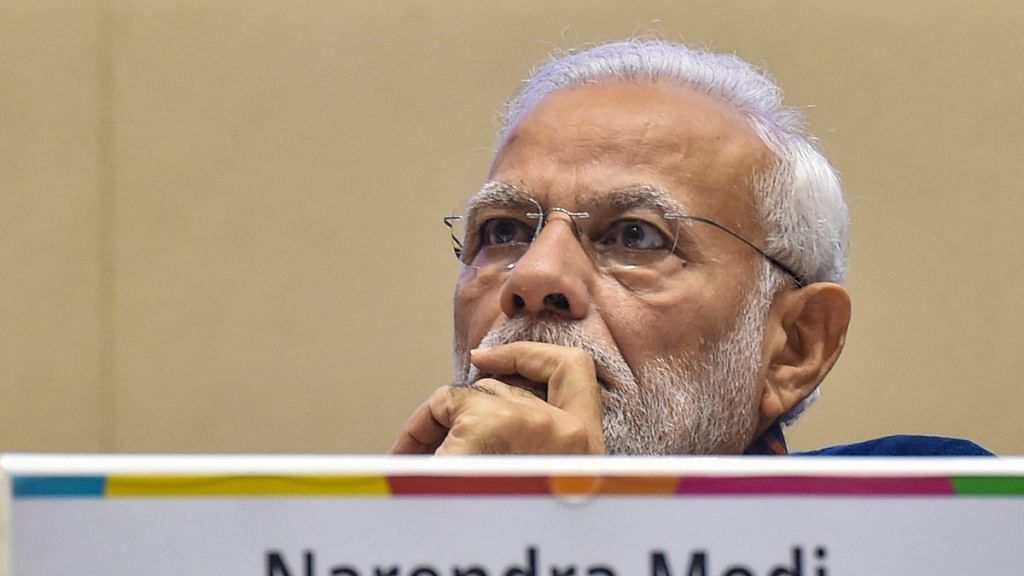Announcement of 11% and above hike on rates for government ads on TV comes a fortnight after 25% hike for print media.
New Delhi: Government presence on private television channels is likely to go up as the Narendra Modi dispensation Friday announced a hike of 11 per cent and above on rates for government advertisements aired on the medium.
This is the second time in two years that the government has attempted to get private channels to air its advertisements. In 2017, however, a majority of the channels had opted out of the rate formula that the government had proposed.
Sources said that this time around, the government desperately wanted to get the big national channels on board, especially with elections due, as it barely has any presence on television.
In its latest offering, the government has said that the exact percentage of the hike — 11 per cent or more — to be received by the channels would be calculated based on their reach and TV ratings as determined by the Broadcast Audience Research Council (BARC).
The decision comes just over a fortnight after the Ministry of Information and Broadcasting announced a massive hike of 25 per cent in the advertisement rates for print media that would especially benefit small and medium newspapers.
Differential rates for the channels
In its statement issued Friday, the government said the revised rates are based on the recommendations of a review committee constituted by the I&B ministry, which had submitted its report on 1 January.
The statement said that the rate structures for news and non-news channels will be differential and will depend on their overall reach in the country, adding that the move will also make it easier for the TV channels to be empanelled with the Bureau of Outreach Communication (BOC), which will allow them to take advantage of the higher rates.
According to ministry insiders, the last time that the ministry fixed the rates on the basis of a formula, several major national television channels did not accept it and had refused to sign the agreement. They were, thus, ineligible for government advertisements.
“They had contested the viewership data with BARC and had raised concerns with the formula on the basis of which the rates were to be calculated,” a ministry source said, adding that the Hindi and English channels especially had a problem, as the data used for determining rates showed higher viewership for regional channels and fewer for national channels.
“Attempts were made to rope them in for GST advertisements, too, but they refused,” the source added.
Also read: Google to make details on political advertisements public
Government took industry on board
A government source confirmed that the new rates are a result of the 2017 formula being tweaked based on some suggestions from industry bodies such as the Indian Broadcasting Federation.
A senior official said that the plan to revise the advertisement rates was long pending because the government advertisement rates were abysmally low as compared to market rates.
“For general entertainment channels, the DAVP (Directorate of Advertising and Visual Publicity) rates were nearly 50 per cent of the market rates, but for news channels, it is just 15 to 20 per cent of the market rates,” the official said. “Because of such low rates, the government barely had any presence on TV.”
The official further said that even the channels that bought the spots refused to run them at prime hours. “They would not run them during the festival season and would run them only during the lean season,” the official said. “They would, for instance, run just 40 spots of say 100 spots they bought.”
The number of channels that will finally sign the agreement to avail the revised rates will determine the government’s presence on television, a crucial tool for publicity before the Lok Sabha elections.
Also read: Months before polls, Modi govt plans to monitor media to flag ‘negative publicity’
